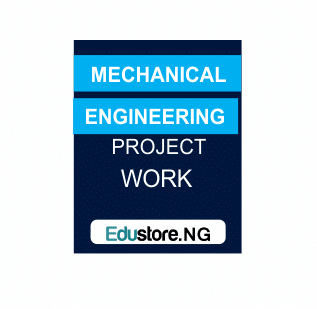An assessment of innovation processes and practices in construction industry in akwa ibom state of nigeria
CHAPTER ONE
INTRODUCTION
1.1 BACKGROUND OF THE STUDY
Because of its contribution to national economic development, competitiveness, and improved living standards, innovation has become a fundamental concern for all businesses and governments. It’s a complicated phenomenon with a wide range of inputs and outputs that have varying effects on firm, sector, and national performance. There is no one, comprehensive definition of innovation; it can encompass both technological and non-technological features, as well as organizational and marketing factors. It may be described as the production and acceptance of new knowledge in order to increase the value of goods, processes, and services in broad terms. Construction firms may benefit from innovation as well, since it provides a method for them to fulfill a client’s objectives in a given project or their own aims over a number of projects (Slaughter, 2000). The building industry 903 is an example of a sector where traditional metrics do not accurately capture the real level of creative activity (NESTA, 2006; Barrett et al., 2007). Construction is sometimes seen as one of the least creative industries. However, as the Hidden Innovation study (NESTA, 2007) demonstrates, this assumption may be unwarranted. Because most of the innovation is co-developed at the project level, it remains concealed. Construction’s innovation trends differ from those of other industries in many respects, since it is a project-based and fragmented sector. There has been a significant amount of study on the features, importance, and management of innovation in the construction industry. More study is needed to examine the many sorts of creative activities that occur throughout the construction project’s lifespan. The discontinuous nature of project-based production, in which there are frequently broken learning and feedback loops, complicates innovation management. As stated by Gann and Salter (2000), project-based firms must manage both project and business processes because the firm’s resources are embedded at both the project and firm level; it is the integration of these two sets of resources that drives innovation. Furthermore, because business processes are ongoing and repetitive, but project processes are transitory and unique (Gann, 1998; Brusoni et al., 1998), businesses should incorporate project experience into their continuing business processes to guarantee organizational coherence. The same approach applies to project and firm-level success in terms of innovation.
1.2 STATEMENT OF THE PROBLEM
It is important for construction companies to adopt innovation in order to be efficient and appealing to market participants. Because the construction business is seen as being conventional and lagging behind other industries, the topic of how innovations are applied to building projects has been addressed. It takes time, organization, and effort to execute an invention, so it was thought that additional study was needed in this field.
1.3 OBJECTIVE OF THE STUDY OBJECTIVE
The overall goal of the research is to:
- Assess the innovation processes in the construction industry.
- Assess the innovation practices adopted by the construction industry.
- Assess if innovation practices has a positive impact on construction industry.
1.4 RESEARCH QUESTIONS
The following research questions guide the objective of the study.
- What are the innovation processes in the construction industry in Akwa Ibom state?
- What are the innovation practices adopted by the construction industry in Akwa Ibom state?
- Do the practices have any positive impact on construction industries in Akwa Ibom state?
1.5 SIGNIFICANCE OF THE STUDY
This research will also add to the current body of literature on this subject and will also act as a resource for academics, researchers, and students interested in conducting future research on this or a similar topic.
1.6 SCOPE OF THE STUDY
The research covers the assessment of innovation processes and practices in the construction industry in the Akwa Ibom state of Nigeria and the Hensek engineering company was used as a case study.
1.7 LIMITATION OF STUDY
The study will focus on one project in order to determine what appear to be the most crucial parts of adopting an innovation from an organizational viewpoint.
1.8 DEFINITION OF TERMS
INNOVATION: a new method, idea, product, etc.
CONSTRUCTION INDUSTRY: a business enterprise concerned with the construction of buildings, bridges, etc.
DOWNLOAD COMPLETE WORK- For Reference Only: Materials are for research, citation, and idea generation purposes and not for submission as your original final year project work.
- Avoid Plagiarism: Do not copy or submit this content as your own project. Doing so may result in academic consequences.
- Use as a Framework: This complete project research material should guide the development of your own final year project work.
- Academic Access: This platform is designed to reduce the stress of visiting school libraries by providing easy access to research materials.
- Institutional Support: Tertiary institutions encourage the review of previous academic works such as journals and theses.
- Open Education: The site is maintained through paid subscriptions to continue offering open access educational resources.





